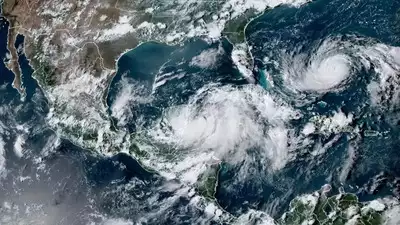Hurricane Idalia, which made landfall on August 30, 2023 as a Category 4 storm in Florida, is expected to bring catastrophic storm surge and wind damage in parts of Florida’s Big Bend region where it represents one of the strongest hurricanes since 1896.
What is Hurricane Idalia?

Hurricane Idalia was the tenth named storm, third hurricane and second major hurricane of the 2023 Atlantic hurricane season. It originated as a low-pressure area that crossed Central America from the eastern Pacific Ocean on August 24. Over time it gradually intensified as it moved north through western Caribbean Sea where it was upgraded from tropical depression to tropical storm status on August 26 and then on August 27 respectively.
As it approached the Gulf of Mexico, Idalia intensified rapidly into a Category 4 hurricane with maximum sustained winds of 130 mph (215 km/h) and minimum central pressure of 940 mbar (27.76 inHg) by August 29. At this time it briefly held onto being one of the strongest hurricanes since Hurricane Patricia in 2015.
Idalia made landfall near Keaton Beach in Florida’s Big Bend region at Category 3 strength with winds of 125 mph (205 km/h) around noon local time on August 30. As it moved inland over northern Florida and then southeast Georgia later that day, its intensity decreased gradually before it moved further east as a tropical storm to North and South Carolina, where it brought heavy rainfall and gusty winds to parts of both states.
On August 31, Idalia emerged into the Atlantic Ocean as a post-tropical cyclone – meaning it had lost tropical characteristics but still contained organized thunderstorms and strong winds – before passing south of Bermuda, where it caused some minor damage and power outages before making a counterclockwise loop around Nova Scotia while weakening further before dissipating over land near Halifax on September 8.
What are the impacts of Hurricane Idalia?
Hurricane Idalia caused significant damage to thousands of homes, businesses and infrastructure along its inland path – specifically Florida where winds and floodwaters were at their strongest. Idalia produced record-setting storm surges from Big Bend region southward to Tampa Bay with surge levels reaching 16 feet (5 meters). Such levels can pose life-threatening hazards that lead to devastating flooding or erosion along coastal regions.
Idalia caused a tornado outbreak with 12 confirmed tornadoes across Florida and Georgia from August 29-September 1. Some were classified as EF-2 or EF-3 in intensity, causing minor damages to trees and buildings while no fatalities or injuries were reported from this series of tornadoes.
Idalia caused four deaths overall: three from indirect causes related to Idalia’s remnants (a woman drowned while trying to escape rising floodwaters in Tallahassee; an electrician electrocuted while repairing his home; and one man falling off their roof during strong winds); and one from direct exposure from flying debris while driving through Jacksonville Beach during high winds associated with Idalia on September 2.
Initial estimates peg insured losses associated with Hurricane Idalia between $2.2-5 billion USD (roughly equivalent to two billion Canadian dollars). It ranks as one of the costliest hurricanes ever to strike the U.S.
Stay tuned to Centralfallout for the latest scoops and updates of Latest News, Trending News, Technology News, World News and Entertainment News.


